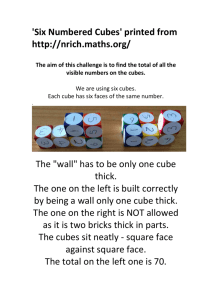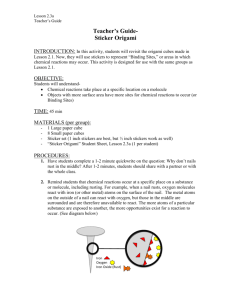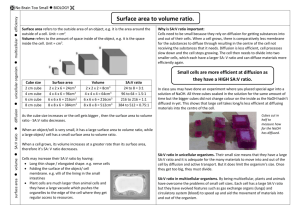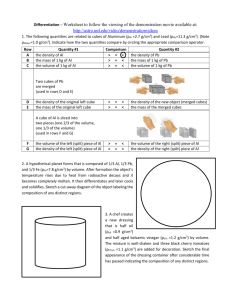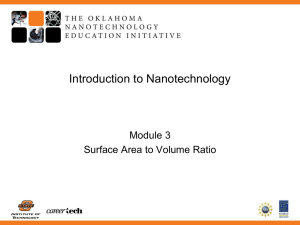Lesson2.3a-StickerOrigami
advertisement
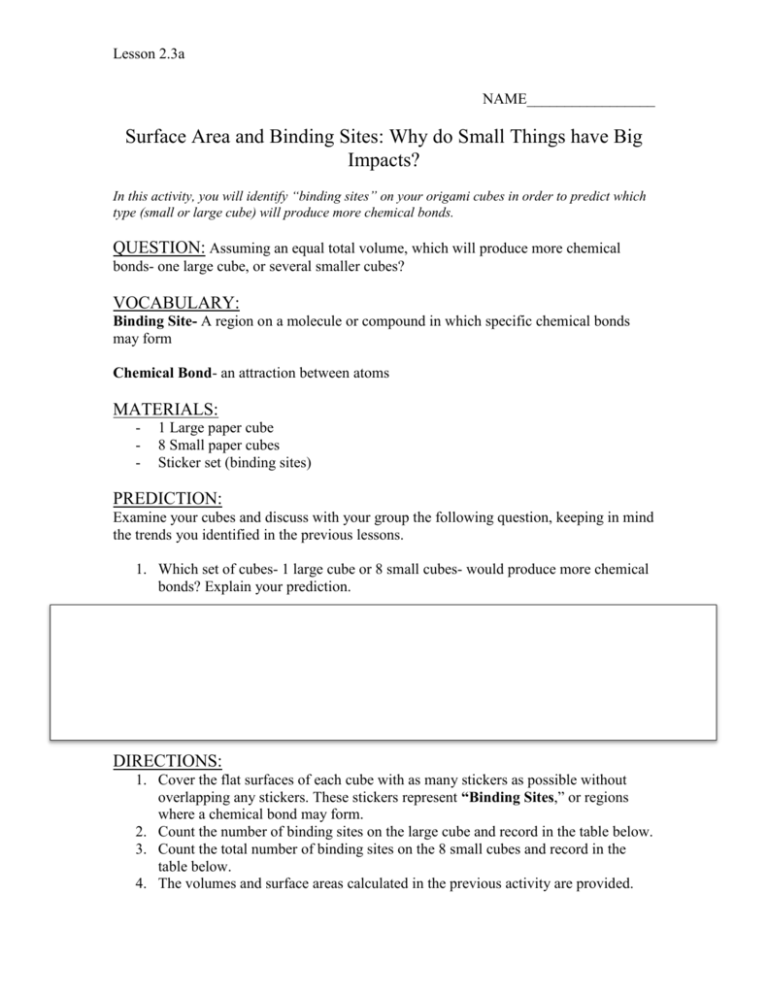
Lesson 2.3a NAME_________________ Surface Area and Binding Sites: Why do Small Things have Big Impacts? In this activity, you will identify “binding sites” on your origami cubes in order to predict which type (small or large cube) will produce more chemical bonds. QUESTION: Assuming an equal total volume, which will produce more chemical bonds- one large cube, or several smaller cubes? VOCABULARY: Binding Site- A region on a molecule or compound in which specific chemical bonds may form Chemical Bond- an attraction between atoms MATERIALS: - 1 Large paper cube 8 Small paper cubes Sticker set (binding sites) PREDICTION: Examine your cubes and discuss with your group the following question, keeping in mind the trends you identified in the previous lessons. 1. Which set of cubes- 1 large cube or 8 small cubes- would produce more chemical bonds? Explain your prediction. DIRECTIONS: 1. Cover the flat surfaces of each cube with as many stickers as possible without overlapping any stickers. These stickers represent “Binding Sites,” or regions where a chemical bond may form. 2. Count the number of binding sites on the large cube and record in the table below. 3. Count the total number of binding sites on the 8 small cubes and record in the table below. 4. The volumes and surface areas calculated in the previous activity are provided. Lesson 2.3a DATA: Total Volume Total Surface Area 1 Large Cube (5cm x 5cm) 125 cm3 150 cm2 8 Small Cubes (2.5cm x 2.5cm) 125 cm3 300cm2 Type of Cube Number of Binding Sites ANALYSIS: 1. Compare the number of sticker binding sites on the large cube with that on the set of small cubes. TAKE HOME POINT: Using evidence from your work above, construct a claim that addresses the question, assuming an equal total volume, which will produce more chemical bonds- one large particle, or several smaller particles?




